This week will be all about price inflation, with the CPI, PPI, and import/export price reports. CPI is expected to rise by 0.3% m/m, down from 0.4%, while increasing by 3.4% y/y, up from 3.2%. Meanwhile, core CPI is expected to rise by 0.3% m/m, down from 0.4%, and increase by 3.7% y/y, down from 3.8%.
CPI swaps expect CPI to be 3.4% y/y and 0.3% m/m, which aligns with consensus estimates.
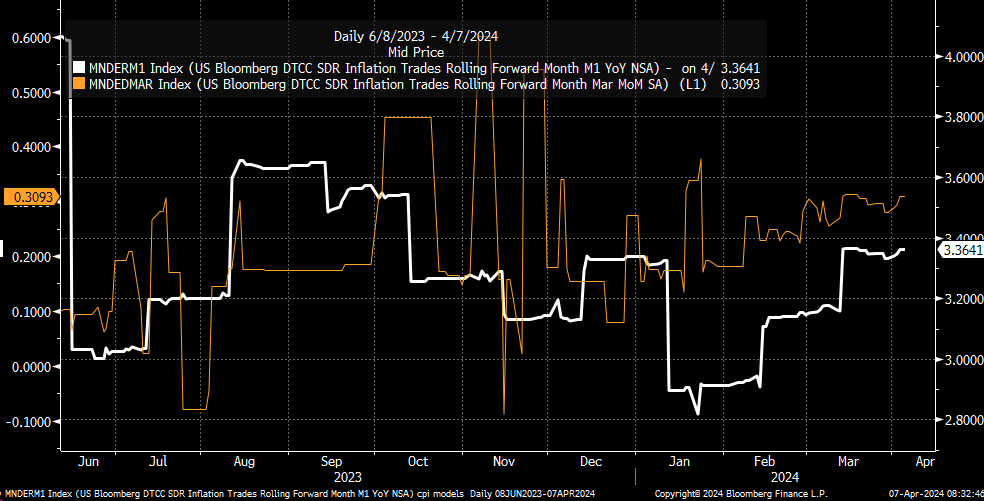
The CPI number has been hotter than analysts’ median estimates, and the CPI swap pricing for a few months now. Going back to July, the CPI report has come in below CPI swap pricing only once in November.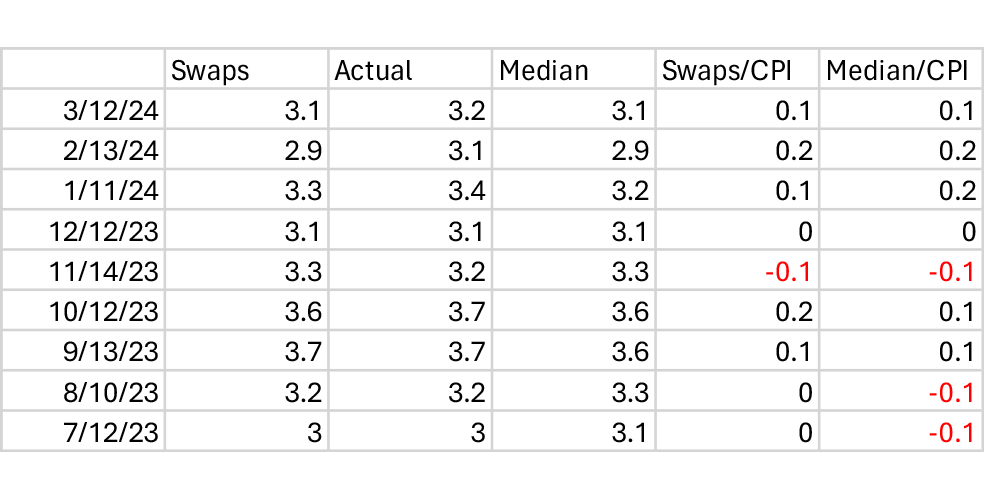
So, another hot headline number wouldn’t be good and likely continue to drive higher rates across the Treasury curve. Last week, following the robust jobs data, the 2-year yield finished the week higher at 4.75%, while the 10-year rate pushed to 4.4%.
The 2-year yield appears to have formed a long-term cup and handle pattern and is now on the verge of breaking out of that pattern, with the potential for the rate to rise to around 5.1%. It may sound surprising to hear that the 2-year rate could rise this high from a fundamental basis.
However, let’s face facts. Given the latest round of job data and expectations based on CPI swap pricing with the y/y rate expected to remain around 3.2% for the next few months, it would make sense for more rate cuts to be removed from market pricing, resulting in a higher 2-year rate.
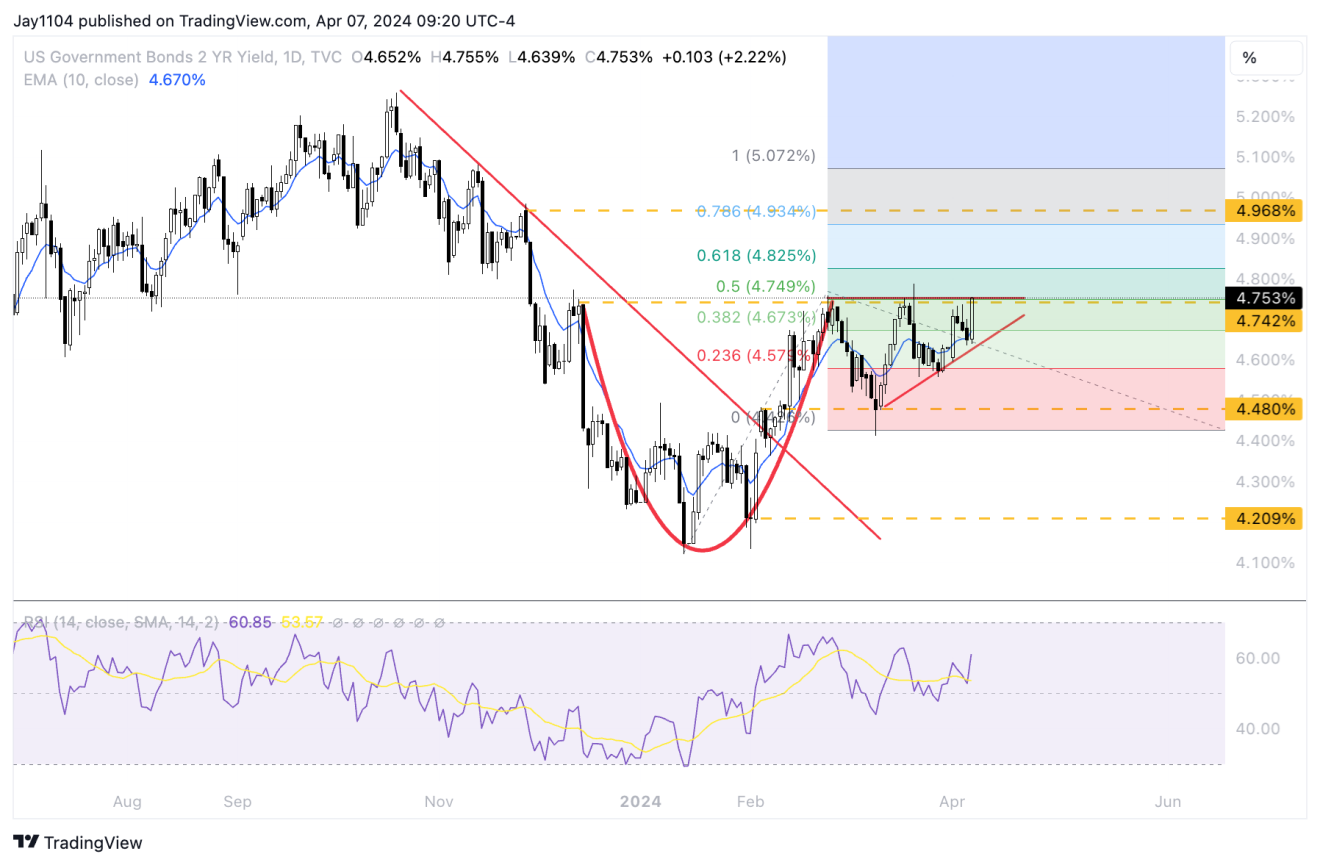
Additionally, we are seeing the “Powell” indicator, which is simply the 3-month Treasury bill spot rate minus the 3-month Treasury Bill 18-month forward rate rise to -91 basis points. That is the highest it has been since late November. It has been steadily rising as the 3-month Treasury bill 18-month forward rate rises to the spot rate, which is just another way to see how the market is removing rate cuts from the overall equation.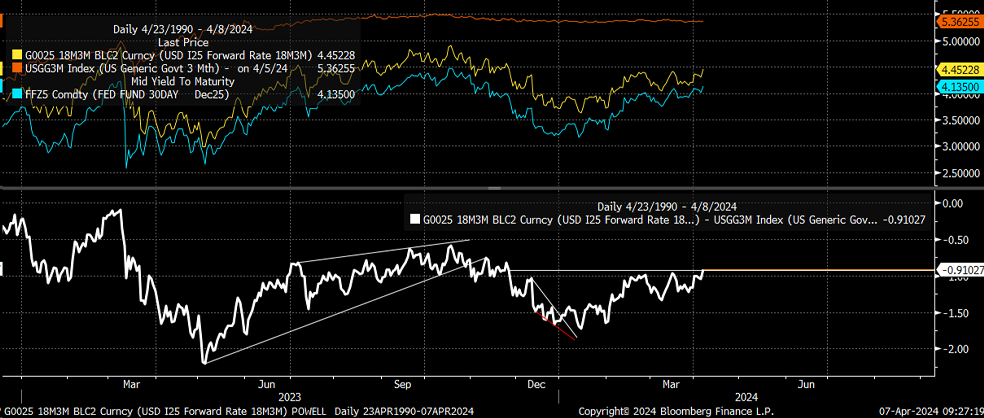
The 10-year rate has a short-term cup and handle pattern, which has broken out. The rate crossed above key resistance at 4.35% to finish the week at 4.4%. At this point, it seems possible for the rate to rise to around 4.5%, if not higher.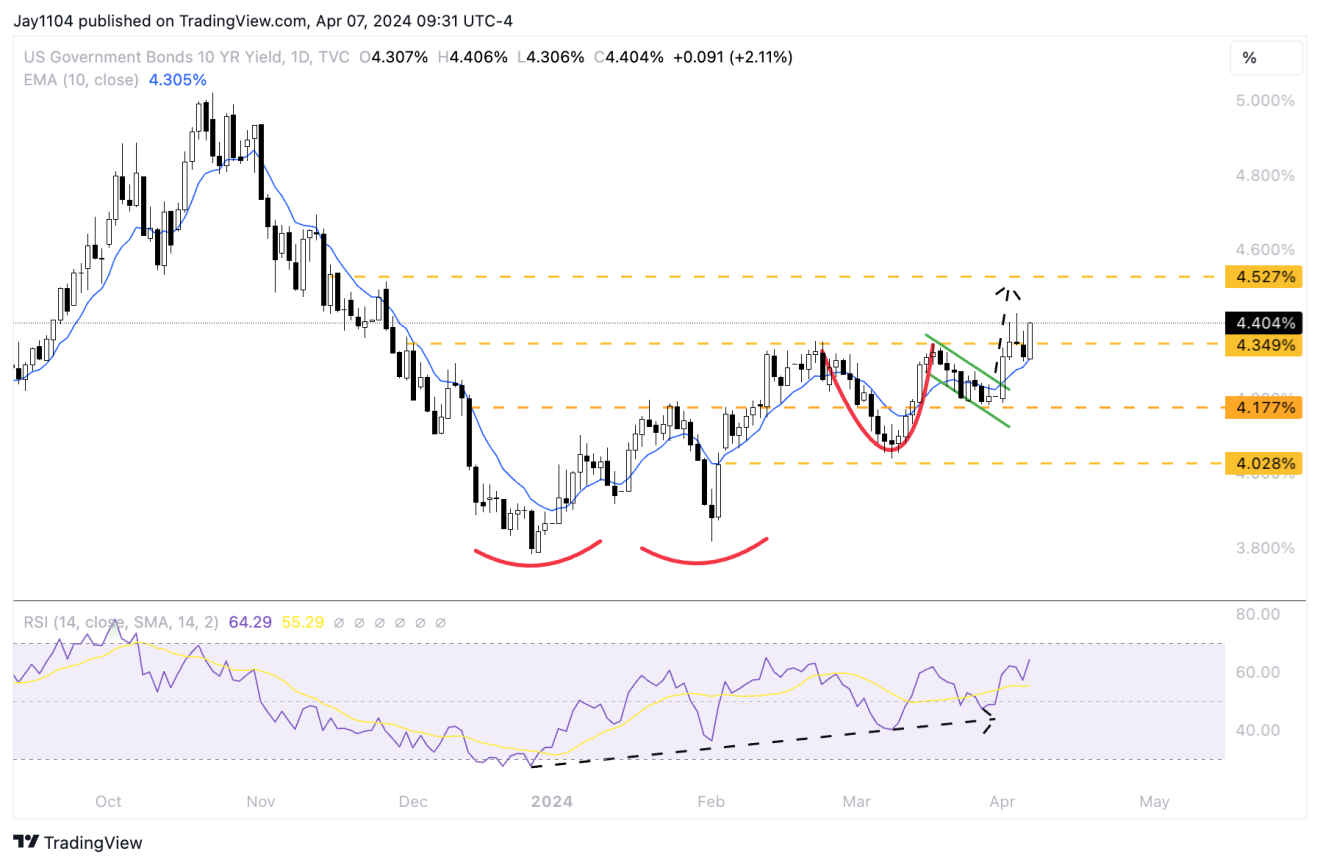
Meanwhile, the spreads between US overnight rate expectations and those of other central banks continued to widen, and this widening should drive the dollar higher in the coming weeks, especially if US data points to a higher for longer monetary policy stance from the Fed.

Also, we are seeing longer-end spread widening, such as those between the US 10-year and the Germany 10-Year, which appears to have broken out of a bull flag. This suggests that the dollar should strengthen further from here as the spread widens further. The 2% region has been a big area of resistance for this spread, and a move above that level should lead to significant widening, potentially to around 2.3% or higher.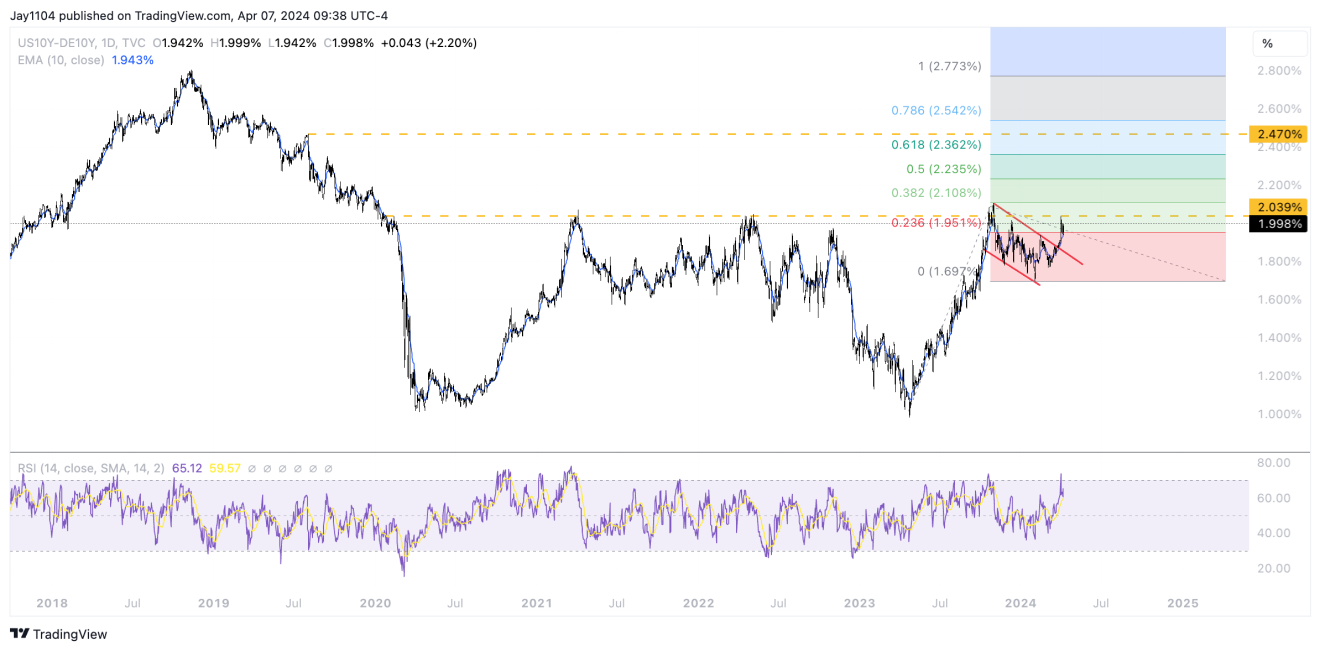
A wider spread should strengthen the dollar versus the euro. With support for the euro currently at 1.07, it could lead to the euro seeing a significant breakdown versus the dollar and potentially sending the euro back to parity versus the dollar.

Wider spreads are likely to lead to wider spreads on High-yield debt as well, and that has already started to happen with the CDX high-yield index rising to 340 this past week.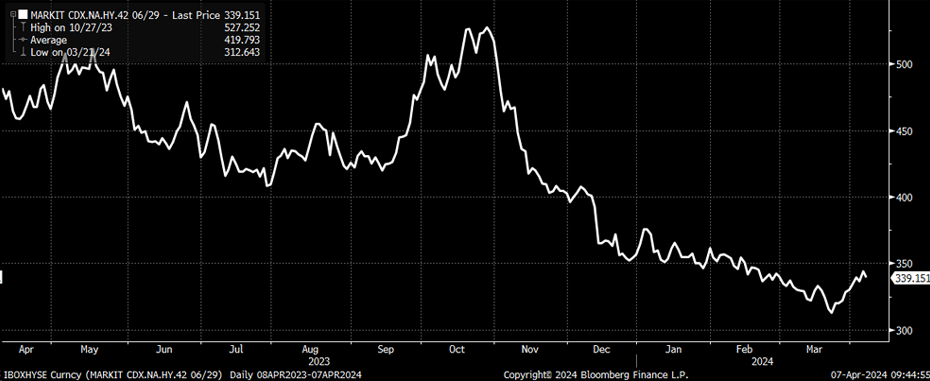
The combination of higher rates, a stronger dollar, and wider credit spreads should lead to tighter financial conditions and lower equity valuations. How low will depend on how far financial conditions tighten, and based on the current economic data, one would think that conditions would need to tighten a lot.
While one may walk away with the impression that the equity market didn’t care about the jobs data, remember what was discussed on Thursday regarding the move higher in 1-day implied volatility levels and the volatility crush that was likely to follow, and that was what Friday’s “rally” was about.
It wasn’t in celebration of a strong job number; it was merely due to the reset in volatility, in the same manner that we saw after the CPI report on March 11 and Nvidia’s results on February 21.
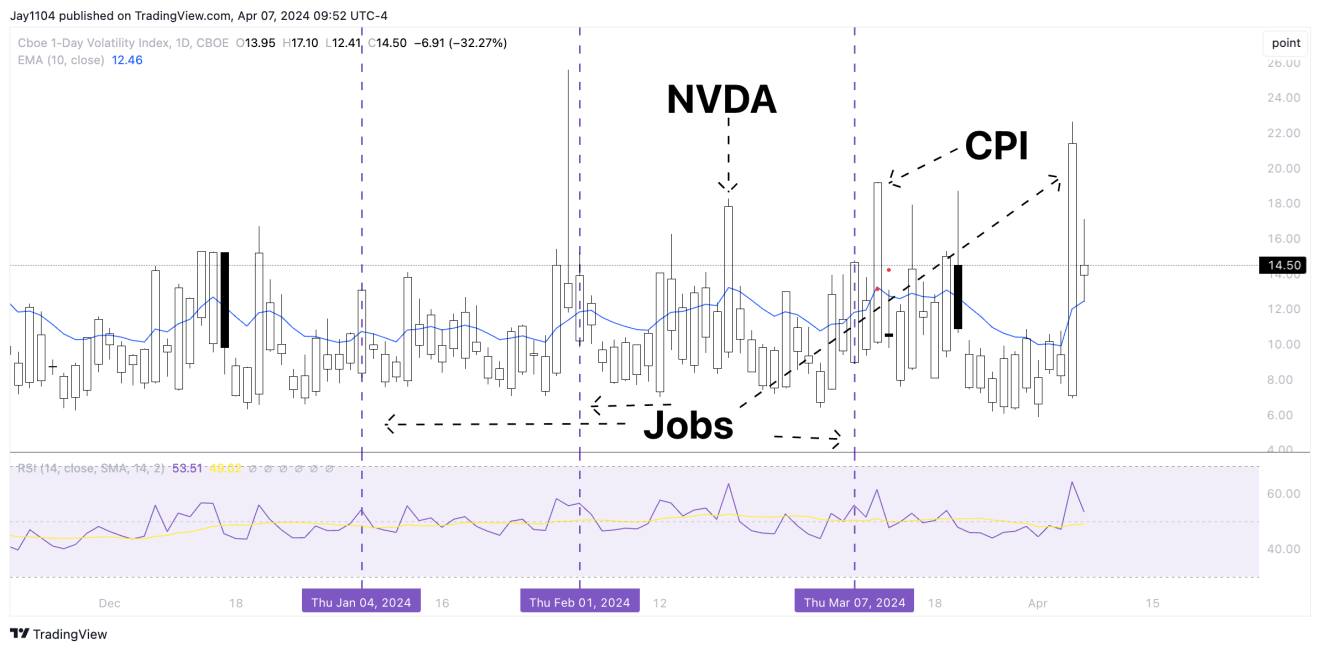
A good part of the Nvidia (NASDAQ:NVDA) rally was given back in the following days, and the entire CPI rally was given back in the Nasdaq. What was also noticeable on Friday was that the Nasdaq tried for a third day in a row to get above the 10-day exponential moving average and failed, closing below it for the fourth day in a row.
It seems clear at this point that the moving average is serving as resistance. If we have formed a diamond pattern on the Nasdaq, which it appears to be, then I would expect to see the Nasdaq undercut the low from February 21 at 17,330.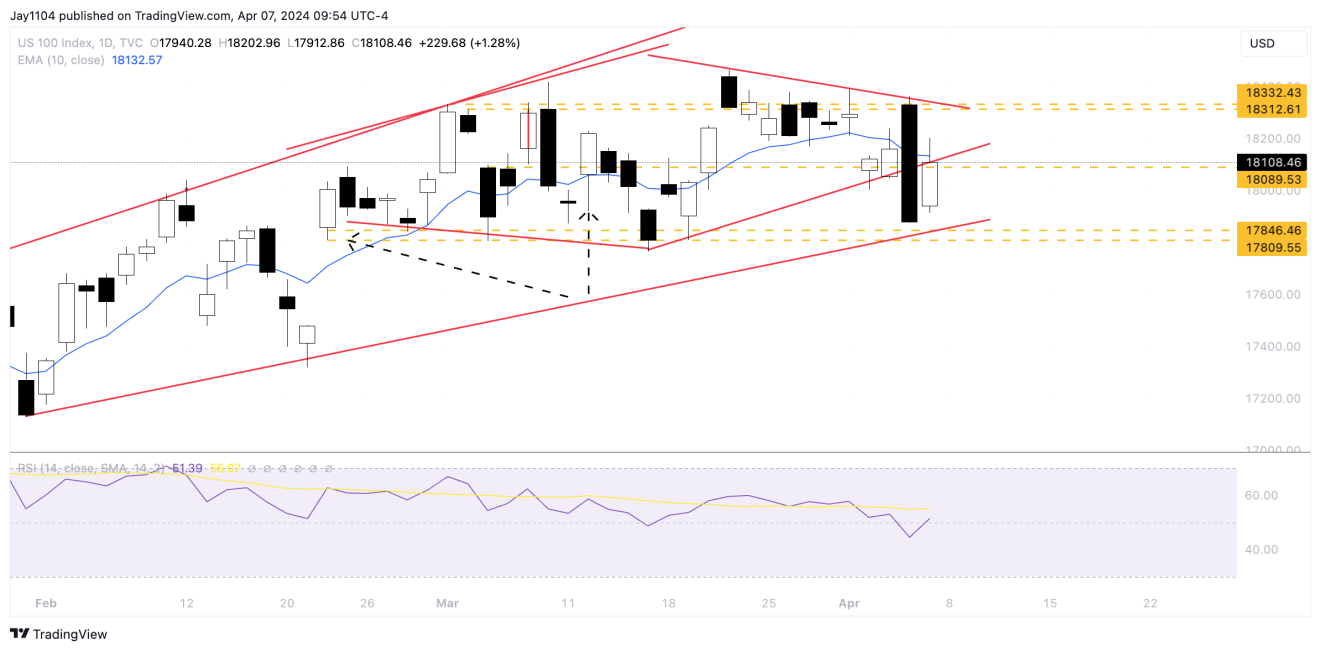
The S&P 500 closed right at the 10-day exponential moving average and has now struggled at that level for four days in a row, suggesting a potential change in trend for the index. Plus, the significant uptrend in the index has broken down from the October lows.
At the end of October, the index was trading at 4,100 when a rally commenced that seemed to make no sense, built on the easing of financial conditions and systematic flows. I see no reason why we can’t return to that level over the next few months as financial conditions tighten, triggering systematic selling flows.
Meanwhile, Nvidia is flirting with the $850 level as of last week, and a break of the $850 level would set up that double-top bearish engulfing pattern in the shares and potentially create the opportunity for the stock to retrace lower, filling the gap at $675.
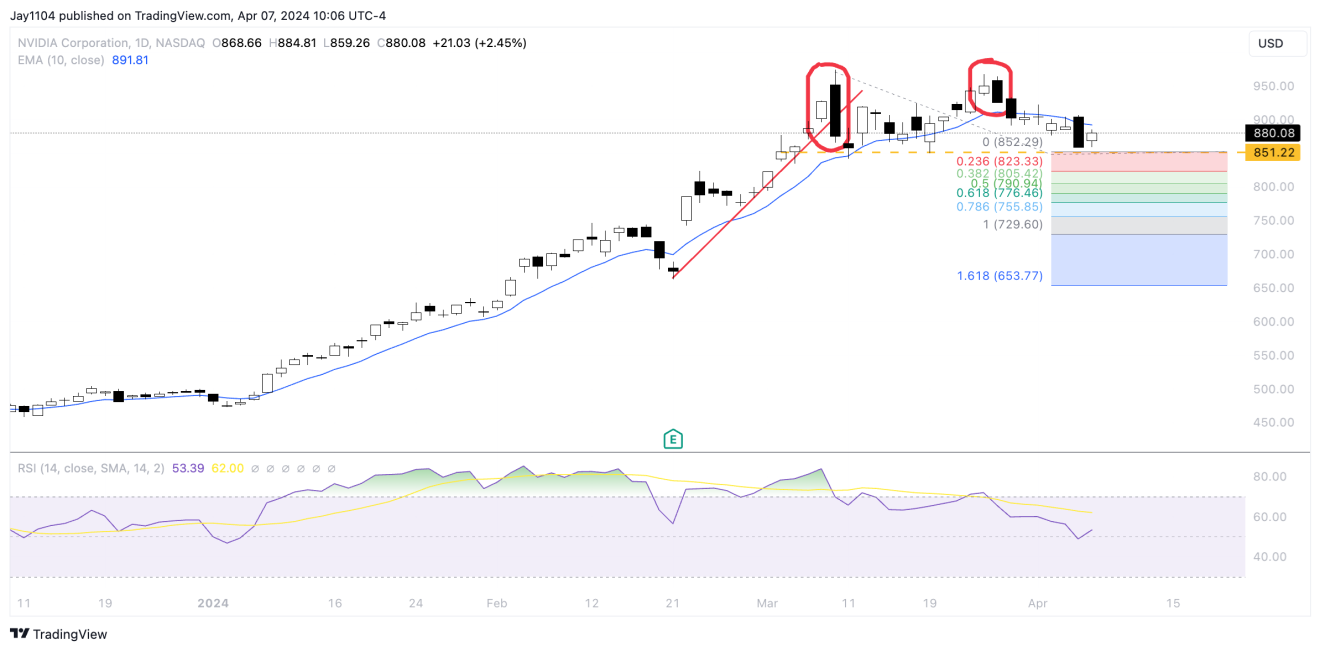
Have a great week.
